ARTICLES AND INSIGHTS
A Town Where People Want to Live [Meguro]
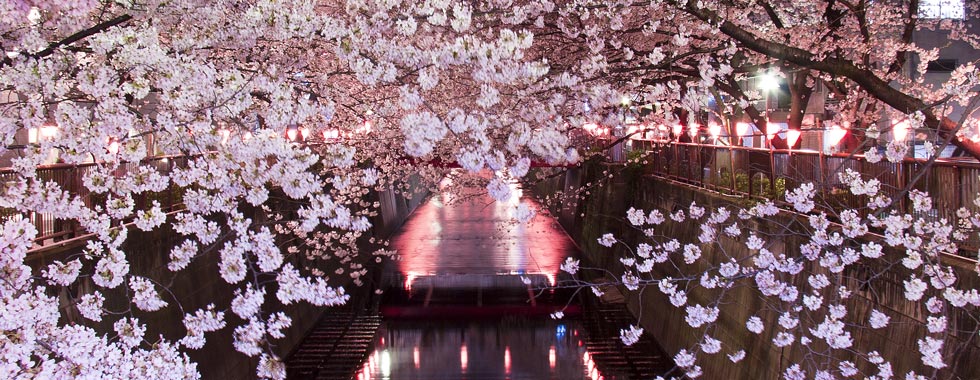
Recently, Meguro has been increasing in popularity and is often ranked among the most desirable towns for living. In addition to its highly convenient location, Meguro has many other appealing characteristics, such as its history and nature. Meanwhile, the redevelopment of the area in front of the station is attracting growing interest.
Easy Accessibility by Train, Car or Other Transportation
During the Edo era, Meguro Fudoson and other areas in Meguro flourished as resorts for commoners. The historic town with scattered ancient temples started to change in September 2000, when the Tokyo Metro Namboku Line Meguro Station opened. Over the last decade or so, accessibility has improved dramatically, which has provided the impetus to the current popularity of this area. The Namboku Line connects Meguro Station to Akabane-Iwabuchi Station through Roppongi-Itchome, Nagatacho, Yotsuya and other stations in the inner-city area. It shares tracks with Saitama Railway line, creating a direct connection between Urawa-Misono and Meguro.
In addition, Tokyu-Meguro Line Meguro Station was moved to the basement in 2003. Above it, the JR Tokyu Meguro Building with offices, a supermarket, specialty mall and others was built. These developments dramatically changed the scenery around the station. In 2008, the Tokyu-Meguro Line extended from Musashi-Kosugi to Hiyoshi. In the future, there is also a plan to connect to the Sagami Line. Considering not only the four main lines (Yamanote Line, Tokyu-Meguro Line, Tokyo Metro Namboku Line and Toei Mita Line) but also the mutually shared tracks, the importance of Meguro as a transport node will continue to increase.
Beyond the railways, Meguro is close to arterial roads, such as the entrance of Shuto Expressway Route 2, Yamate Street, Meguro Street and Daiichi Keihin Road, and is an easy location to reach by car. In particular, Shuto Expressway Route 2 has fewer traffic jams than other routes. Buses for a variety of destinations including Ookayama, Toritsu-Daigaku, Sangenjaya and Tokyo Stations also operate out of Meguro Station.
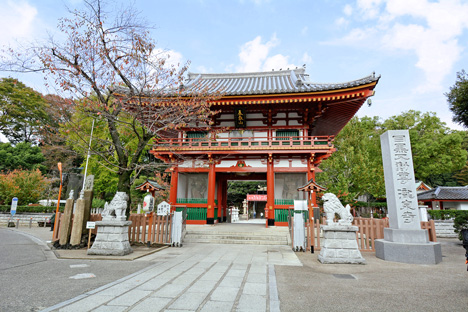
Meguro Fudoson
Meguro Fudoson, which was treated generously by Japan's feudal government, was a major resort since the era of the third general, Iemitsu Tokugawa. It was so large that it was the only place that was drawn sticking out on shubikizu (Edo era town maps). Even today, special buses operate on its festival day (28th of every month).
Foodie Area Offering World Cuisines
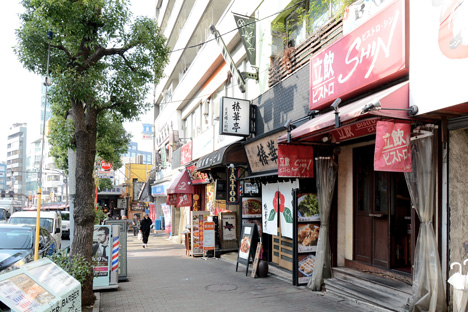
Standing bars
It is said that standing bars, which are now common and offer inexpensive but delicious food and drink, have expanded based on the success of one place in Meguro.
In addition to its convenience for shopping, Meguro has an impressive variety of restaurants. As a historic town, there is a astonishing choice of cuisines, new and old, Eastern and Western. For example, Nishimura is a lamprey restaurant, with lampreys known for their medicinal effects since the Edo era, located in front of the gate of Meguro Fudoson. The restaurant is so popular that people will be lined up outside during lunch time. Tonki, a pork cutlet restaurant, which opened in 1939 and was once loved by Shotaro Ikenami, the novelist, is still one of the most famous restaurants in Meguro. In Meguro Gajoen, which opened as Japan's first wedding complex in 1928, visitors enjoy meals in the gorgeous garden, which was called Ryugu-jo Castle in the Showa era.
On the other hand, not only Italian, French and Chinese restaurants but also Spanish, Indonesian, Thai, Vietnamese, Nepalese and other international restaurants have been increasing. It is not an exaggeration to say that almost any kind of food is available. Not limited to high-end restaurants, there are many inexpensive eateries. Meguro is famous for of its ramen (noodle) restaurants. And it is said that standing bars, a popular current trend, started in Meguro, so this place can certainly be considered a center for food and drink.
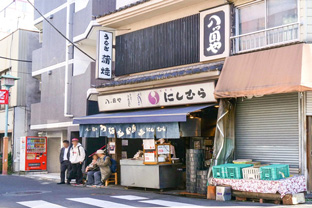
Nishimura, a lamprey restaurant
The main branch of Nishimura, the long-established lamprey restaurant, which has been known as a health supplement since the Edo era, is located in Sugamo.
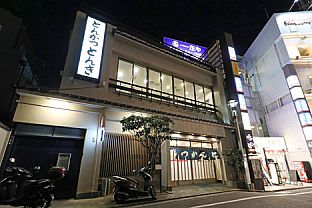
Tonki, a pork cutlet restaurant
The specialties at Tonki are not only delicious pork cutlets but also its immaculate kitchen and lively staff.
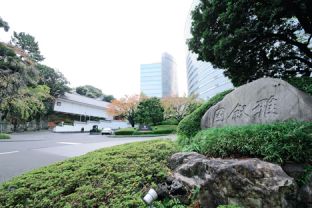
Meguro Gajoen
It is also famous for rotating exhibits in the Tokyo-designated tangible cultural asset Hyakudan Kaidan Hall.
There Are Also Many Historical, Natural and Cultural Facilities
In addition to its convenience, Meguro has many places and facilities that add to daily life. Among its temples and shrines, Meguro Fudoson is famous as the oldest sacred place in the Kanto region, but Ootori Shrine, which hosts the popular Cock Fair at the end of each year, should not be overlooked. Also, there is a shrine visiting course called the Seven Deities of Good Fortune in Yamate, with Meguro Station located at the center.
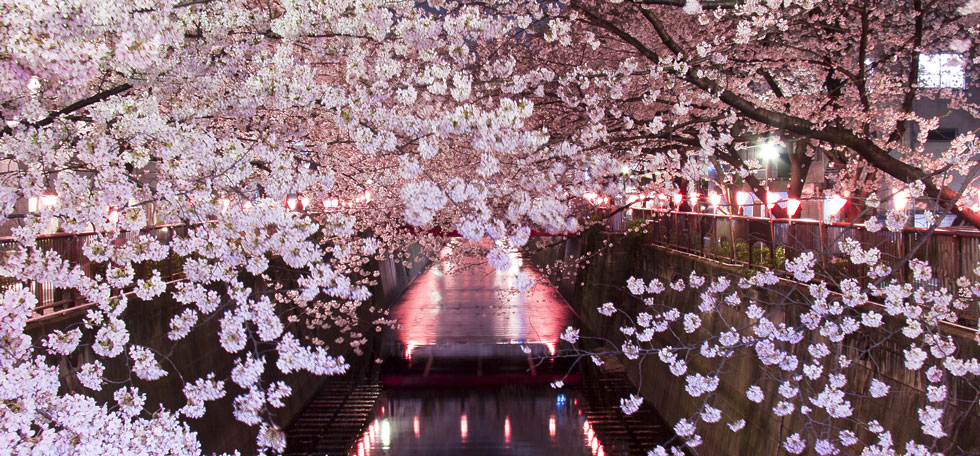
Meguro River
The Meguro River is known for its magnificent cherry trees. The tunnel formed by the cherry trees is gorgeous and the place is crowded with people enjoying the blossoms day and night.
In nature, the cherry trees along the Meguro River are unforgettable. The area around the Tokyu Toyoko Line Nakameguro Station is famous as a viewing spot, but the row of cherry trees stretches further and the surrounding Meguro area is more suitable for relaxing and enjoying the cherry blossoms. The well-maintained walking track along the river is perfect for a stroll, a jog and other activities. You can also enjoy bird watching.
There are also many cultural facilities. Meguro Museum of Art, Tokyo, is located near the Meguro River and Kume Museum of Art is in the building in front of Meguro Station. Kita Noh Theater, which holds Kita style Noh plays that flourished at the beginning of the Edo era, and Meguro Cinema, which shows a wide range of Japanese and Western films, are also located within walking distance of the station. Meguro Parasitological Museum is an example of unique facilities in the area.
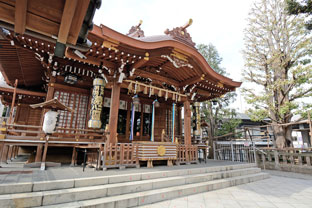
Ootori Shrine
Ootori Shrine, which is located at the intersection between Yamate Street and Meguro Street, is famous for the Cock Fair held at the end of each year.
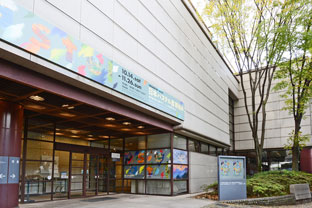
Meguro Museum of Art, Tokyo
Meguro Museum of Art, Tokyo, is in Meguro Kumin Center, which is located along Meguro River. The neighborhood also has a gym, pool, library and more.
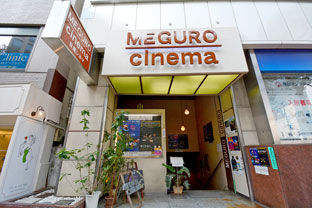
Meguro Cinema
Meguro Cinema mainly shows old movies. Save money and enjoy movies that you may have missed.
Diverse People Gather for the Many Embassies, Schools and Interior Shops
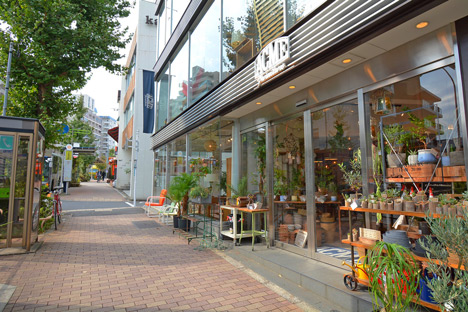
Interior shops along Meguro Street
On Meguro Street, there are a many interior shops, ranging from those using traditional Japanese houses to outlets in modern buildings.
In addition, Meguro Station is close to numerous embassies and schools. The embassies of Thailand, Indonesia, Columbia, Poland, Algeria and others are all nearby. This may explain the extraordinary range of foods available in Meguro.
Many students in school uniform can be seen in town during rush hour, including those from Hinode Girl's High School and Junior High School, Tama University and its high and junior high schools, Tokyo Gakuen High School and Sugino Fashion College. Young people and people from overseas also walk about the town.
Although it is somewhat distant from the station, many interior shops are also located along Meguro Street. Their number has gradually increased since about 2000. These shops are fun to visit, because they have a unique atmosphere, almost as if they were renovated as private houses.
Abundant High-Quality Housing Has Appeared with Redevelopment
In Meguro, the latest redevelopment topic is the area in front of the station. Three buildings (a 27-story office building and 40-story and 38-story tower apartments) are planned for construction and will be completed in December 2017. Although 365 of the 661 dwelling units in the apartments are priced at 100 million yen or higher, they sold out within about four months from the start of sales, which became a hot topic. However, the dwelling units have more attractive points.
Ken Corporation Ltd. is now offering Meguro Dai-ichi Mansions for rent, and Brillia Towers Meguro for rent and sale. They are built in a stable area called Hanabusayama, which is one of the Jonan Gozan (five great hilltops), and feature a verdant setting, great views and more. We will be looking at these residences in this column in the future.
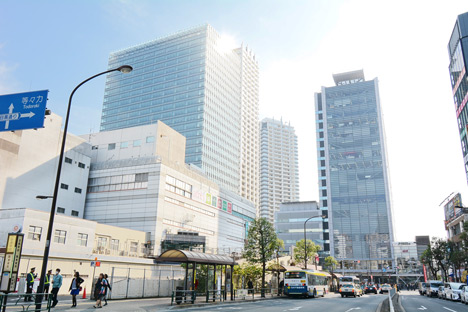
Meguro Station
The number of high rise buildings has increased in the last decade and the scenery around Meguro Station has changed dramatically. The convenience of the area has also greatly improved.
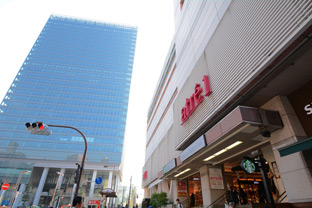
East Exit of Meguro Station
With the completion of the redevelopment, the number of offices and houses will increase with further growth expected.
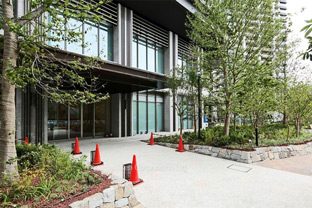
Entrance of Meguro Dai-ichi Mansions
The redeveloped area also includes considerable rental housing. Because of the location’s excellent convenience, these properties are expected to be popular.
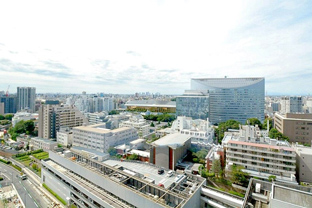
View from the 13th floor of Meguro Dai-ichi Mansions
Since the area surrounding Meguro Station is located on a hill, the tower offers an unobstructed view.
Hiroko Nakagawa
For more than two decades, Nakagawa has been involved in editing magazines, books and websites on living-related issues such as purchasing, leasing and building. Nakagawa has lived in Omotesando for many years, and is keenly aware of the comfort of living in central Tokyo. Nakagawa is the author of an All About Guidebook titled Sumiyasui Machierabi: Shutoken (Finding a livable town: Tokyo metropolitan area).